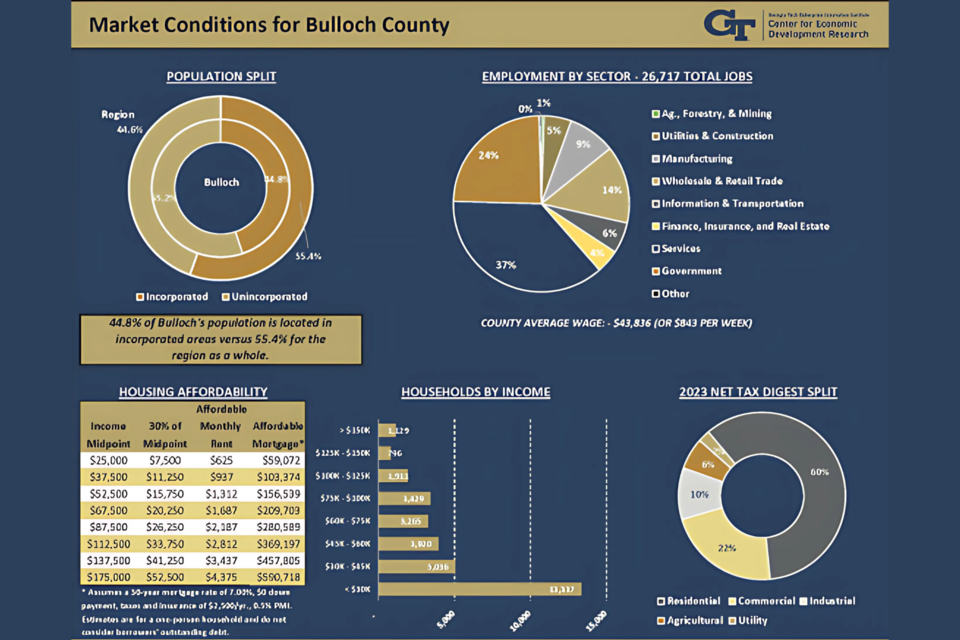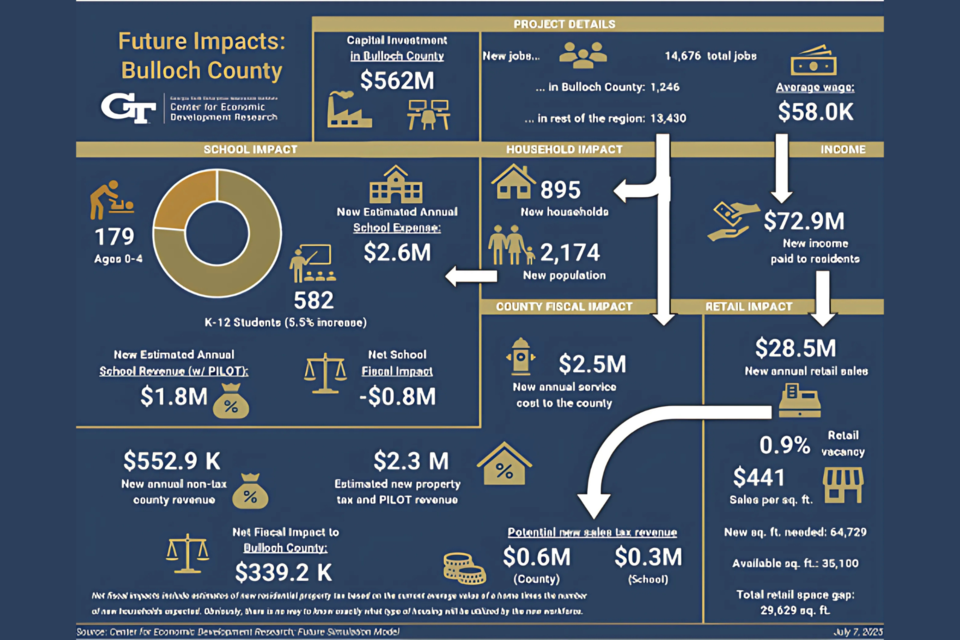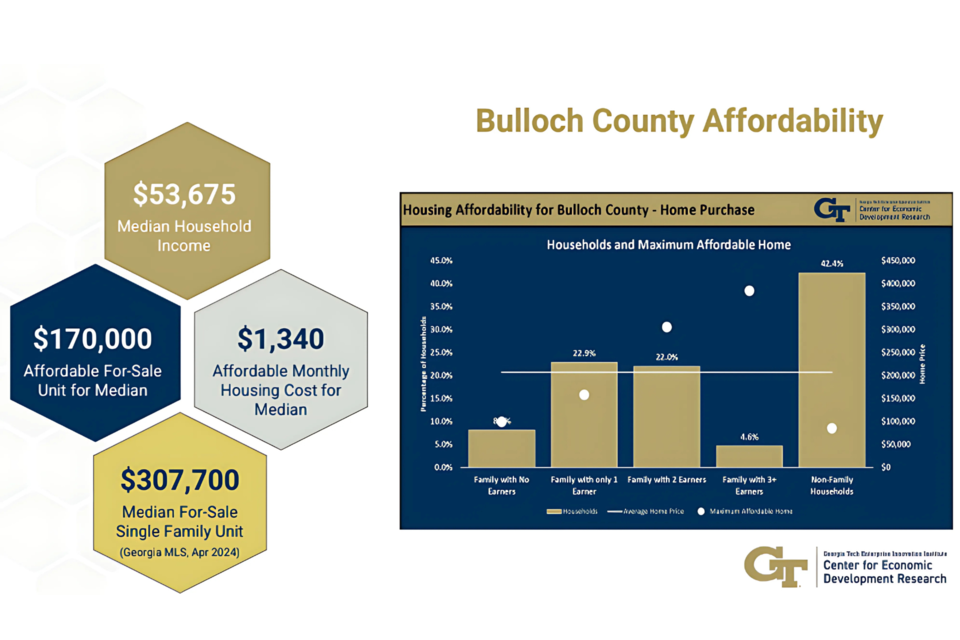A new study presented by the Georgia Tech Center for Economic Development Research projects a significant increase in housing demand in Bulloch County and the surrounding region due to the upcoming Hyundai Metaplant America. Betsy McGriff, Project Manager at the center, presented the initial findings of the coastal housing study at a community meeting on Wednesday, July 9, 2025, outlining the anticipated impacts and potential strategies for the community to address them.
McGriff, who noted her deep roots in the area as a double Eagle and commended local leaders for proactively addressing the potential changes. “You are now part of a regional economy,” McGriff stated, emphasizing the interconnectedness of the area with the Hyundai ecosystem.
The study’s initial phase involved surveying local realtors, developers, and HR managers to gauge the current landscape. Key concerns identified included a lack of affordable housing, limited inventory, zoning challenges, and rising land costs. McGriff highlighted the significant organic population growth Bulloch County has already experienced, with an approximately 7% increase in the five years leading up to the COVID-19 pandemic. The study forecasts an additional 3% population growth in Bulloch County directly attributable to the Hyundai development and its suppliers over the next eight to nine years. This translates to an estimated 895 new households and approximately 1,802 new school-aged children.

While acknowledging the positive capital investment of $562 million in plants within Bulloch County and the creation of 1,200 local jobs (with 13,000 more projected regionally), McGriff cautioned about potential fiscal impacts. She explained that because the initial investment and many of the jobs will be located outside of Bulloch County, there might be a gap between where new residents live and where tax revenues are generated to support the increased demand for services like schools and infrastructure.

A key focus of the presentation was housing affordability. McGriff pointed out the stark reality that the median household income in Bulloch County ($53,675 annually) can only afford a home valued at around $170,000, while the median sale price for a single-family unit is currently $307,700. This disparity underscores the need to focus on workforce housing, defined in the study as housing affordable for those earning between 80% and 120% of the area median income.
| Household Type | Max Affordable Home | Median Home Price | % Who Can Afford |
|---|---|---|---|
| Median-Income Family | $170,000 | $307,700 | 22% |
| Single Earner | Lower | $307,700 | 4.6% |
| Two Earners | Higher | $307,700 | 42.4% |
Rental Affordability and Cost Burden
-
Rental Market Pressures: The average renter household income in Bulloch County is $36,476, much lower than the $80,843 average for owner-occupied households. As a result, many renters are struggling to keep up with rising costs.
-
Cost-Burdened Renters: About 30% of renters in Bulloch County spend more than 30% of their income on housing, with a substantial share paying over 50%. This places them at risk of housing instability.
-
Rental Mix: Bulloch County has a higher share of renter-occupied units (48%) than the state average (35%), highlighting the importance of affordable rental options.
Household Incomes and Housing Affordability
- Income Distribution: While there are over 13,000 households earning less than $45,000 annually, the supply of affordable housing for these families is severely limited.
- Workforce Housing Needs: The study identifies a critical shortage of housing affordable to those earning between 30% and 80% of the area median income, which includes many essential workers.
Dr. Lynn Patterson, a principal with Three Points Planning, further elaborated on the “what next” phase of the study. She emphasized the importance of updating planning tools and zoning codes to guide growth in a way that supports existing communities and preserves the rural character of the county. “We want to create really interesting places for for you to live, for your family to live, for your friends to live, for new residents to live, places that you can be really proud of,” Patterson stated.
Patterson outlined various housing typologies that could be explored, including smaller single-family homes, duplexes, neighborhood-scale multi-family units, and innovative approaches like cottage courts and conservation subdivisions. She stressed the need for a diverse mix of housing options to cater to different income levels and demographics, including smaller units for young professionals and seniors.
The next phase of the study will delve deeper into providing best practices, developing generic development standards, and identifying suitable locations for different types of housing based on infrastructure availability. Collaboration with the cities within Bulloch County will be crucial in developing effective strategies.
While the challenges of managing growth and ensuring housing affordability are significant, the study aims to provide Bulloch County with the tools and information needed to proactively plan for the changes brought about by the Hyundai Metaplant and build a thriving community for all residents.




